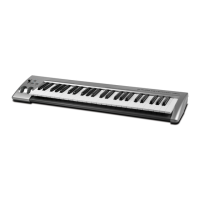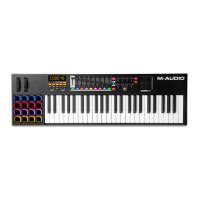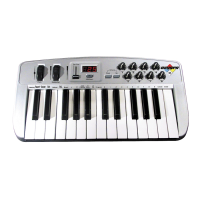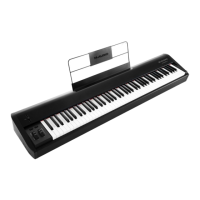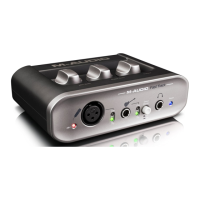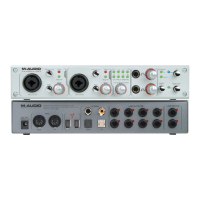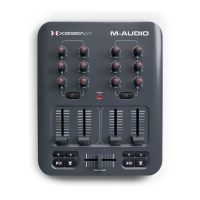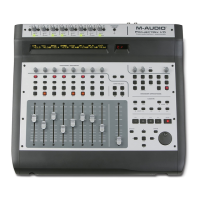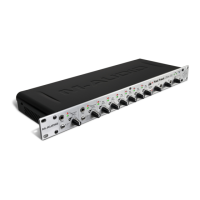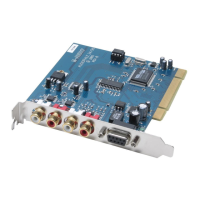7
5. Modulation Wheel: The modulation wheel is typically used for modulation of the sound
you are playing. This type of real-time controller was originally introduced on electronic
keyboard instruments to give the performer options such as adding vibrato, just like
players of acoustic instruments do. The modulation wheel is fully MIDI-assignable.
6. Advanced Button: The Advanced button is used to access all the advanced functions of
the keyboard.
When the Advanced button is pressed, the keyboard goes into “Edit Mode.” In Edit
Mode, the keys on the keyboard are used for selecting functions and entering data.
The LED above the Advanced button indicates whether or not Edit Mode is engaged. In
Edit Mode, the black keys on the keyboard are used for selecting functions, while the
white keys are used for data entry, channel selection, and DAW selection.
Your keyboard will exit out of Edit Mode as soon as a function is selected, or the
Advanced button, CANCEL or ENTER key is pressed (the LED above the Advanced
button will turn off). The keyboard can then be used to play notes again.
Note: Refer to the Advanced section for more information.
7. Directional Buttons: These buttons can use the MIDI, Mackie Control
®
or HUI
®
protocols
to control certain functions in software that support them. Please see the Directional
Buttons and Transport Buttons section of the Advanced Functions chapter for more
information.
8. Transport Buttons: These buttons can use the MIDI, Mackie Control or HUI
®
protocols
to control certain functions in software that support them. Please see the Directional
Buttons and Transport Buttons section of the Advanced Functions chapter for more
information.
Rear Panel
1. Kensington® Lock: Use this port to
attach a security cable to the unit.
2. DC Power Adapter Input: If you do not
wish to power Keystation through the
USB connection and are using the MIDI
connector to trigger an external sound
module, connect a DC 9 V, 500 mA
power adapter (sold separately) here.
3. USB Port: The USB port delivers power to the keyboard and transmits MIDI data when
connected to a computer to trigger a software synth or MIDI sequencer.
4. MIDI Out: Use a five-pin MIDI cable (sold separately) to connect this jack to the MIDI IN of
an external sound module or to the MIDI In of a synthesizer.
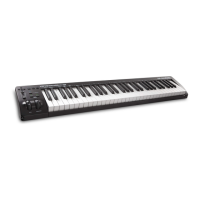
